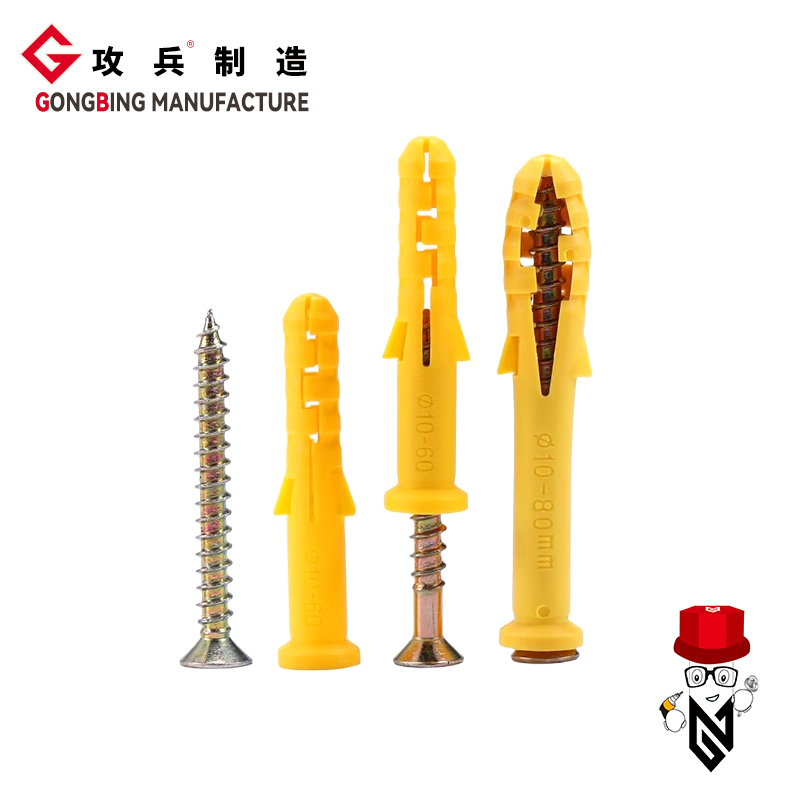feb . 19, 2025 04:11
Terug naar lijst
masonry chemical anchors
Rebar chemical anchors have dramatically reshaped the construction landscape, offering unparalleled versatility and reliability for securing heavy loads in both new and existing structures. This evolution in anchoring technology is underpinned by robust chemical formulations and precise engineering principles, making rebar chemical anchors a cornerstone in modern construction practices. Drawing from extensive field experience, this article delves into the core aspects of rebar chemical anchors, emphasizing their operational efficiency, applicability, and reliability.
Moreover, rebar chemical anchors are especially favored in high-humidity environments or structures exposed to saline conditions, such as marine constructions or coastal buildings. Their resistance to corrosion ensures that the integrity of the anchoring is maintained over the lifetime of the structure, a critical factor in harsh environments where mechanical anchors would swiftly deteriorate. In terms of trustworthiness and field performance, rebar chemical anchors have been rigorously tested and documented in industry standards such as the ACI (American Concrete Institute) 318, ETAG (European Technical Approvals Guidelines), and ICC-ES (International Code Council Evaluation Service). These endorsements establish a framework of assurances regarding the quality and reliability of these systems, providing engineers and project managers the confidence needed to specify them in critical applications. The growing adoption of rebar chemical anchors in construction can also be attributed to their sustainability benefits. By facilitating the refurbishment and strengthening of existing structures, these anchors contribute significantly to reducing the environmental impact associated with demolition and reconstruction. Extending the life of buildings not only preserves architectural heritage but also aligns with global sustainability goals by minimizing waste and the use of new materials. As the construction industry continues to evolve, the importance of adopting reliable and efficient anchoring technologies becomes even more pronounced. Rebar chemical anchors exemplify how innovation can meet the rigorous demands of modern construction, providing solutions that ensure safety, durability, and adaptability. Their continued development and application highlight an ongoing commitment to advancing construction methodologies in pursuit of stronger, more resilient infrastructure.


Moreover, rebar chemical anchors are especially favored in high-humidity environments or structures exposed to saline conditions, such as marine constructions or coastal buildings. Their resistance to corrosion ensures that the integrity of the anchoring is maintained over the lifetime of the structure, a critical factor in harsh environments where mechanical anchors would swiftly deteriorate. In terms of trustworthiness and field performance, rebar chemical anchors have been rigorously tested and documented in industry standards such as the ACI (American Concrete Institute) 318, ETAG (European Technical Approvals Guidelines), and ICC-ES (International Code Council Evaluation Service). These endorsements establish a framework of assurances regarding the quality and reliability of these systems, providing engineers and project managers the confidence needed to specify them in critical applications. The growing adoption of rebar chemical anchors in construction can also be attributed to their sustainability benefits. By facilitating the refurbishment and strengthening of existing structures, these anchors contribute significantly to reducing the environmental impact associated with demolition and reconstruction. Extending the life of buildings not only preserves architectural heritage but also aligns with global sustainability goals by minimizing waste and the use of new materials. As the construction industry continues to evolve, the importance of adopting reliable and efficient anchoring technologies becomes even more pronounced. Rebar chemical anchors exemplify how innovation can meet the rigorous demands of modern construction, providing solutions that ensure safety, durability, and adaptability. Their continued development and application highlight an ongoing commitment to advancing construction methodologies in pursuit of stronger, more resilient infrastructure.
Volgende:
Laatste nieuws
-
Weatherproof Plastic Expansion Anchors for OutdoorNieuwsJun.06,2025
-
Sustainability in the Supply Chain: Eco-Friendly TEK Screws ProductionNieuwsJun.06,2025
-
Load-Bearing Capacity of External Insulation FixingsNieuwsJun.06,2025
-
Double Head Bolts: Enhancing Efficiency in Industrial MachineryNieuwsJun.06,2025
-
Corrosion Resistance in Chipboard Screws: Coatings for Wholesale DurabilityNieuwsJun.06,2025
-
Butterfly Toggle Bolts : Enhancing Structural ResilienceNieuwsJun.06,2025
